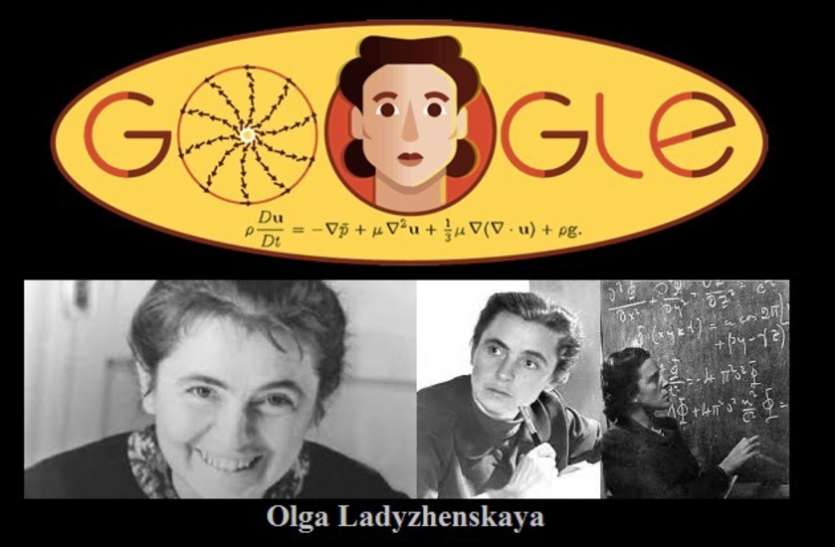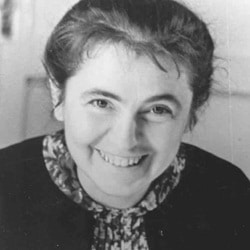Olga Ladyzhenskaya Biography, Achievement and Contribution as a Russian mathematician


| Name Olga Ladyzhenskaya Nationality Soviet–Russian Awards Noether Lecture Role Mathematician Alma mater Moscow University |
Olga Aleksandrovna was born on 7th March 1922 and died on 12th January 2004. She was born on 12th January 2004. Her work on a partial differential equation (especially the 19th problem of Helbert) and fluid dynamics has known her to be the Soviet and Russian mathematicians. She presented the first rigorous proofs that the Navier-Stokes equations had converged to a finite difference form. Ivan Petrovsky’s she was a student. In 2002, she received the Lomonosov Gold Medal.
Ladyzhenskaya was one of the very few influential 20th century female mathematicians. In the 20th century the general theory of partial differential equations, which govern liquids, gasses and elasticity were developed. In the parabolic (typical of ut–uxx=0,0), and elliptic (uxx+ uyy= 0,) equations, Ladyzhenskaya was one of the most important characters. The spectral theory of general operators and diffraction achieved pioneering results. With her student Nina Ural’tseva she analyzed in detail the regularity of elliptical quasilinear equations and the regularity of parabolic equations with Ural’tseva and Vsevolod A. Solonnikov.
Biography
Born and raised in the small town of Kologriv, Ladyzhenskaya is the daughter of a mathematics instructor who is recognizable as an early inspirer and an adventurer in mathematics. In this city also, artist Gennady Ladyzhensky was the brother of her grandfather. Her father was arrested by the NKVD in 1937, Alexander Ivanovich Ladyzhenski, and killed as an “enemy of the people.”
Unlike her elder sisters who were not allowed to do the same, Ladyzhenskaya finished high school in 1939. Because of her father’s status, she was not admitted to Leningrad State University. After the occupation of Germany in June 1941, Ladyzhenskaya was a professor of the Kologriv Academy. Finally, she received a degree in 1943 and graduated in 1947 from Moscow State University.
She finally received her PhD in 1951 at Leningrad State University and began to teach in 1950 in the Department of Physics of Leningrad, where she worked under Sergei Sobolev and Vladimir Smirnov. In 1953 she was awarded a second PhD by Moscow State University. She entered the Steklov Institute in 1954 and in 1961 became the Director of the Mathematical Physics Laboratory.
Aleksandr Solzhenitsyn and Anna Akhmatova, a poet who was her friend, were both artists and storytellers love of Ladyzhenskaya. She was once a Municipal Council member, made philanthropic efforts to help those exploited by the Soviet regime, and repeatedly put her personal safety and life at risk. In her later years, Olga Ladyzhenskaya was affected by various eye problems and relied upon special pencils. She died on her sleep in Russia on January 12, 2004, two days before her trip to Florida.
Life and Career
Olga Ladyzhenskaya was born in Kologriv, Russia, where her dad was the headmaster of high school and a professor of the arts and mathematics. The mathematical education of Olga Ladyzhenskaya began at secondary school in Kologriv. After school, her father gave her lessons at home. Her father was denounced in 1937 and declared the people’s enemy, imprisoned and then executed to the Soviet authorities. Unlike her older sisters, Olga Ladyzhenskaya was allowed to go to high school and graduated in 1939 from it, but her father prevented her from joining Leningrad University.
(His wife, Anna Mikhailovna, had to fight to keep the family safe and fed after Khrushchev’s clandestine speech in 1956 and three years after Stalin’s death.) In 1943, he was admitted to the Moscow University, where he studied at an educational institute, teaching in Kologrív after the German invasion in June 1941. She participated in one workshop with Mark at Israel Gelfand.
Visik and Olga Oleinik, who later became well-known math and teachers of the University of Moscow. The workshop of Gelfand became the most popular of Russian mathematics. They both completed their study with Ivan Petrovsky. Ladyzhenskaya remained close to Visik but rivaled Oleinik for a long time. She graduated, moved to Leningrad in 1947 and briefly met Andrei Kiselev, her fellow student. She completed her PhD at the University of Moscow in 1953 with Sergi Sobolev and Vladimir Smirnov. She was named professor in 1950 at the University of Leningrad’s Departement of physics, from 1954 onward she became a researcher of the Steklov Mathematics Institute’s Mathematical Physics Laboratory in Leningrad, and from 1961 was appointed a head of the laboratory.
Mathematical Work
University thesis Ladyzhenskaya, under Ivan Petrovsky’s supervision, resulted in the approximation of hyperbolic (u tt-u xx=0) equations, but her early major success was elegant estimates for elliptical operators with generalized spaces. Your most famous sharp estimate is. Here u is an elliptic operator acting on u, which determines a function in a domain on the u=0 boundary and ives.
The operator is the Laplacian; it measures the function in the mean square by the value on domain W, measures the mean square for all derivatives up to 2. For example, u is a power potential and the charging density is u. From these estimates, it can be demonstrated that the solution of equations involving a daily existence exists. “Sharp” implies that the constant C can be picked in order to equalize inequalities in a given domain W for a particular function.
The first work of Jean Leray on “Sur le Mouvement d’un fluid visqueux emplissant l’espace” (1934; On the motion of a viscous fluid filling space), and Eberhard Hopf in “Uber die Anfangswertaufgabe fur die Hydrodynamischen Grundgleichungen” (1951; On the Navier-Stokes equations (incompressible viscous flow), Ladyzhenskaya showed unique global solvability for the two-dimensional case.
Ladyzhenskaya proposed groundbreaking modifications to Navier-Stokes equations with the goal of dealing with large speed variations on the three-dimensional case. The first “attractor” findings were also created. This means that a solution to an initial value problem is “eventually” close to a particular solution, “the attractor,” in which it remains, under certain restrictions. One of the biggest innovators was she here.




